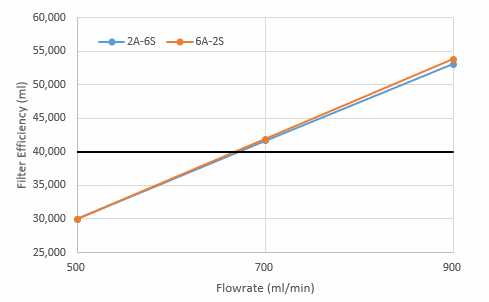|
"Gravitation can not be held responsible for people
falling in love" - Albert Einstein
Objective
The purpose of this assignment is to estimate the hydraulic loading rate on a
filter and determine the required backwash velocity and
the depth of the expanded medium bed in a sand filter.
You must
hand in the cover sheet for the assignment and a printouts of spreadsheet for
Part 1, your calcualtions for Part 2, and Word document for Part 3. Also, submit your Excel file for
Part 1 and Word document for Part 3 to the Dropbox in Canvas.
Part 1: Using the
data obtained
in the first week of
the
water filtration lab,
present, analyze, and discuss the data. Your data should be presented in
graphical form. Remember that Ms.
Paanee is not an engineer; explain the concepts in terms that will help her
understand the data and make an informed choice about the filter. As an example,
your graph may look like the following:



Part 2: Consider the filters in the lab using only sand as the filter
medium. The flowrate through the filter is 900 ml/min, the diameter of the
filter is 3.5 in., the depth of the filter bed is 8 in., the sand has a particle
diameter of 0.5 mm or 0.02 in. with a settling velocity of 0.27
ft./s, and the porosity of the sand is 0.30.
-
Determine the hydraulic loading rate in gpd/ft.2
-
Based on the hydraulic loading rate, classify the filter as either a slow
sand filter or a rapid sand filter.
-
Determine the required backwash velocity to expand the sand filters in the lab to
a porosity of 0.80.
-
Determine the depth of the expanded filter bed.
Part 3: Develop a Word document describing how to compute
filter efficiency.
Make sure your equations follow the format we discussed in class and use the
equation editor.
Part 4: Read Chapter 12 in the
Strategies for Creative Problem Solving by Fogler and LeBlanc and review
all previous quizzes for a 15 question Final Quiz.
Cover sheet for homework
This website was originally
developed by
Charles Camp for
CIVL
1101.
This site is
Maintained by the
Department of Civil Engineering
at the University of Memphis.
Your comments and questions are welcomed.
|



